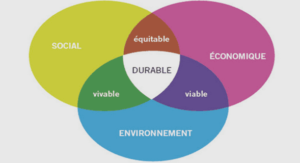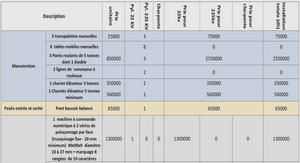The Statically Compatible Layerwise model SCLS1
Notations and model description
In this chapter the benefits of using the SCLS1 model will be presented, based on Baroud’s study Baroud (2016). We will introduced the equations of the existing SCLS1 model for elastic multilayered plates as seen in Baroud et al. (2016). We will give the definitions of the generalized strains and stresses of this model, as well as the equilibrium equations and the constitutive equations.
The generalized stresses of the SCLS1 model are the generalized stresses of the Reissner-Mindlin plate per layer in addition to the inter-laminar shear and normal stresses at the interfaces between layers and the divergences of this inter-laminar shear stresses.
Moreover, we have 6n-1 equilibrium equations in terms of the generalized stresses where the number of layers n was derived from the 3D exact equilibrium equations. Finally, the relation between the generalized stresses and generalized strains was given by the generalized constitutive equations deduced by using the stress energy formulation.
Notations and model description Weconsider a linear elastic multilayered plate composed of n orthotropic elastic layers and occupying the 3D domain = ]h1 h+ n[ where R2 is the middle surface of the plate and h its thickness. The plate is subjected to forces in its upper face + and lower face with the distributed surface forces T+ = (T+ k ) and T = (Tk ).
The boundary of the domain, denoted by , is decomposed into two parts : a free part N = N ]h1 h+ n[ where T = (Tk) = ( klnl) is set to zero, and a restrained part D = D ]h1 h+ n[ where the displacement u = (uk) is set to zero. The subset N and D are the partition of , and n = (nk) is the outer normal of N.
Figure 1.1– Notations in a layer In the following, x and y are the in-plane coordinates and z is the out-of-plane coordinate. The following notations are introduced : The subscripts i and j j + 1 indicate layer i and the interface between layers j and j +1 with 1 i nand1 j n 1, respectively. By extension, the 15 1.2. Governing equations of the 3D model superscripts 01 and nn + 1 refers to the lower face face + = h+ n respectively. = h1 andtheupper In each layer ihi h+ i and hi are, respectively, the bottom, the top and the mid plane z coordinate of the layer, and ei = h+ i hi is the thickness.
Thus we have h+ i = hi+1 for all a i n 1, we set h+ 0 = h1 and hn+1 = h+ n Greek subscripts 12 indicate the in-plane components. Latin subscripts k lmn t [X] is the transpose of [X]. 123 indicate the 3D components. (Si = (Si klmn)) is the fourth-order 3D compliance tensor of layer i with the minor and major symmetries : Si klmn = Si lkmn = Si klnm = Si mnkl and it is positive definite. Its inverse is the 3D elasticity stiffness tensor and is denoted by (Ci klmn) for layer i.
The tensor (Ci klmn) possesses the same symmetries as (Si klmn) and it is also positive definite. Si is monoclinic in direction z : Si 3 = Si 333 = 0 (xy z) are the in-plane stress components, 3(xy z) are the transverse shear stresses and 33(xy z) is the normal stress. (xy z) are the in-plane strain components, 3(xy z) are the transverse strain stresses and 33(xy z) is the normal strain. u (xy z) are the in-plane 3D displacement components, u3(xy z) is the normal 3D displacement component.
The static of SCLS1 model In this section, we construct an approximation of 3D stress fields, as z polynomial forms per layer. By taking into consideration the 3D equilibrium equations, if the polynomial degree of the membrane components of the 3D stress fields is d, then the degree of the transverse shear stresses 3 is at most d+1 and that of the normal stress 33 is at most d+2. The SCLS1 model considers the following form of the 3D stresses in layer i, for 1 i n, such that are layerwise linear functions of z.
By integrating the first two equations of the 3D equilibrium equations we conclude that the transverse shear stress 3 are layerwise quadratic functions of z. In addition, by integrating the last equation of the 3D equilibrium equations we can find that the normal stress 33 is a layerwise third-order polynomial function of z.
The stresses 3 and 33 take into account the continuity at the interfaces between the layers. The coefficients of these polynomials are the generalized stresses. Moreover, this from of the 3D stress field is the one and only one hypothesis of the SCLS1 model





